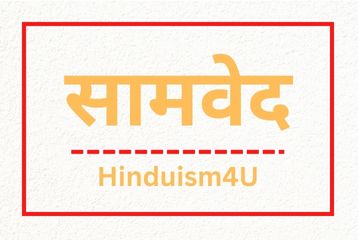Samaveda is one of the four Vedas. It is the smallest of the four Vedas. Most of it is taken from Rigveda. Samveda is related to music or singing. The collection of lyrical hymns of the Vedas is called “Samveda”. These praise mantras are sung in sweet voices. The literal meaning of Sama is – the song by which the divine is found. In Samagan, the melodious voice is started from the higher aalap and gradually it is brought to the lower aalap. The rendering of the importance of Samveda is also found in Shrimad Bhagwat Geeta. When Lord Krishna tells Arjuna that “Among the Vedas, I am the Samaveda.
Branches of Samaveda
Due to the singing and reading style of Samveda, it had more than 1000 branches. Maharishi Patanjali has also accepted 1000 branches of Samveda. Although most of the branches are currently extinct. At present it has only 3 branches available.
- Kauthumiya
- Ranayaniye
- Gemini
Kauthmiya
Ranayaniye
Gemini

Division of the Kauthimiye branch of the Samaveda
Kauthmiya branch of Samaveda is currently available. There are mainly two parts of Samaveda:-
- Archik
- Gaan
Here the meaning of Archik is – a group of Richas. However, we also divide it on the basis of:-
- Poorvaarchik
- Uttaraarchik
Poorvaarchik
Uttararchik
7 swaras in samaveda
Swara Rishi has written in the Mimansa Bhashya – “Samvede Sahastram Geeterupayah” – that is, there are thousands of modes of songs of the Vedas. Here we mean the style of the song and not its parts. The proof of various ways of singing is also evident from the fact that the sound of music is present in every particle of nature. The recognition of the 7 notes of music must have happened from the middle of this nature only. Music is the way to take you to that land of life where bliss is bliss. When God accepts music or singing, then it becomes praise. This praise has been depicted through singing in Samaveda.
The 7 Swaras described in Samaveda are something like this.
- Madhyam
- Gandhara
- Rishabh
- Shadj
- Dhaiwat
- Nishad
- Pancham or Atswara
7 swaras in samaveda | Description |
Madhyam Swar | When the air rising from the navel collides with urah, heart, throat, and head and appears in the form of sound, then it is called medium voice. |
Gandhar Swar | In this, the air rising from the navel hitting the throat and the top brings holy smell in the nasika, then it is called Gandhara voice. |
Risabh Swar | In this process, the air rising from the navel collides with the throat and head, and roars like a bull. This is why it is called Rishabh Voice. |
Shadj Swar | These swaras are produced from these six places namely nostrils, throat, chest, lungs, palate, tongue and teeth. That’s why they are called Shadj voice. |
Dhaiwat Swar | When these previously raised swaras are overdone, then they are called dhaivat voice. |
Nishad Swar | Due to which all the Voice or swaras sit down or go to dim, or are suppressed, then it is considered as ‘Nishada voice. |
Pancham Swar | In its pronunciation, the five Pranas named Prana, Apan, Samana, Udana and Vyana are used, hence it is called Pancham voice. (The cooing of the cuckoo is counted in the pancham voice / swar.) |
Brahman, Aranyak and Upnishad of Samaveda
- The Brahman texts of the Sama Veda are Prauddha, Shadvinsha, Sanvidhan, Arsheya, Devatadhyaya, Upanishads, Samhitopanisads, Vansha, Jaimaniya.
- Its Aranyaka texts are Talavalkar and Chhandogi.
- Its Upanishads are Chandogya Upanishad and Kena Upanishad.
Out of the two major Upanishads of Samveda, Chhandogya Upanishad has more utility. This has been mentioned by all the experts of Hinduism, writing from the Vedanta schools of Hinduism. Adi Guru Shankaracharya has also cited Chhandogya Upanishad the most (810) in his Vedanta commentary, which is much more than any other ancient text.
Other Points about Samaveda
- Gandharva Veda is a sub-veda of Samveda.
- One who sings Samveda is called Samag.
- Its 450 mantras cannot be sung.
- A total of 7 swaras, 3 grams, 21 faint, and 49 tones are described in Samveda.
- Most of the “Gayatri” and “Pragadh” verses of Samveda have been used.
- Gramagana, and Aranyagana are used in Purvarchika while Uhayagana is used in Uttararchika.